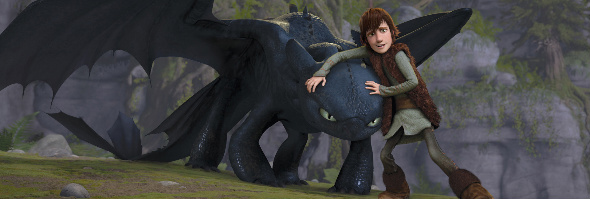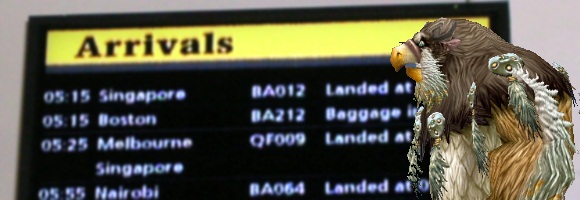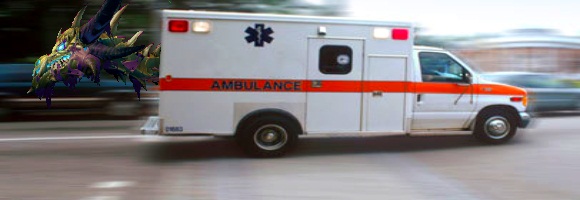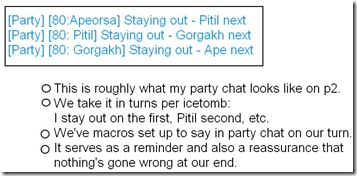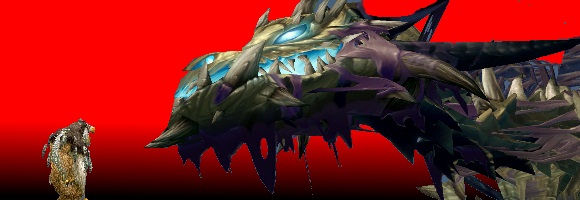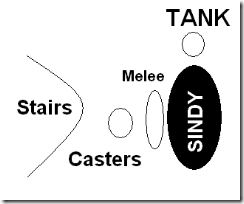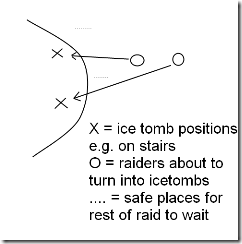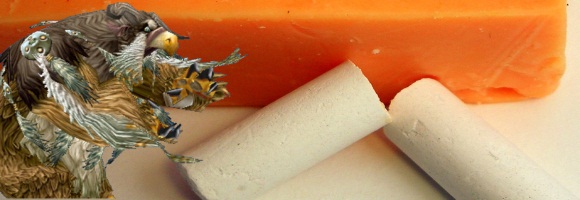In perusing WoW.com on my normal Monday morning shift, I tend to always follow Spiritual Guidance, usually when it’s headed up by Dawn Moore. Although I tend to go back and forth on my agreement with her, I’ve noticed that she’s taken an approach to encouraging people to participate more in PvP. YES! With the thrill of this expansion coming to a close, there are a variety of ways to continue to enjoy this game, one of which is PvP.
Why am I so excited for this, you ask? Well, I’m an avid PvP’er. One of my favorite things to do is grab some guildies, and utilize the Random Battleground Queue until I’m blue in the face. I particularly love Warsong Gulch, which makes me pretty excited for the upcoming “Twin Peaks” battleground. Here’s the poop on what you stand to gain from becoming more active in PvP:
- Increased Wintergrasp / Vault of Archavon Time: People consistently complain about how Wintergrasp is broken on their server. Although I agree to a certain extent, a team of skilled, team-oriented PvP’ers has the potential to overcome any short-comings (**COUGH** Scale vehicle damage with Tenacity **COUGH**).
- Off-set Gear: Although I don’t miss the days of “Welfare Epics” by any means, I am a fan of utilizing some PvP pieces until you get that PvE piece you want. Sure, resilience does no good in PvE, but you can use that Wrathful Gladiator’s Cloak of Salvation until you get the frosties for your Drape of the Violet Tower or you get that Greatcloak of the Turned Champion to finally drop off of 25-man Saurfang.
- Deeper Class Knowledge: By starting to play your class in a different environment, you start to learn things you may not have considered before. The ability to change your focus and style as a player gains a lot of respect from someone like me.
However…
Although Dawn does a great job of laying out the basics, let me make it clear that I think it’s a bad idea to grind out Emblems of Triumph to get your PvP gear. Sure, if you have them sitting your bag, by all means, spend them. I know from experience how frustrating it is to go into battlegrounds wearing nothing but your PvE gear. Let’s take a look at what you stand to gain by going the “Honor” route:
Gear Progression
First and foremost, I really enjoy the feeling of accomplishment of getting to spend my honor points on a new piece of gear. I’m currently gearing up my Resto PvP set for my Shaman, and although I’ll toss some Triumphs at it, if I have them, most of my gear is coming from Honor. I liken it to working out hard in a gym and seeing the results build, instead of sitting plugged into one of those ab-shock deals while I watch the Blackhawks annihilate the Flyers in Game 5 (I had to). You feel the hard work, hence the payoff is more rewarding.
Second, as you add pieces over time, you realize which stats you need and which ones you don’t need. When I was building my Discipline PvP set, I initially went for mostly +Crit pieces so I could proc Inspiration and Divine Aegis. I realized halfway through that I was burning mana like an oil spill from an irresponsible foreign oil company. I switched it up and started getting more MP5 and Spirit on my gear. Especially if you’re a healer, you have the choice of some caster DPS gear (except for the Paladin), which will be laden with more haste and crit. Once you discover your play style, you’ll figure how to tweak your gear. If you grind dungeons for all the badges for the Furious set, you may find that you’re too heavy on a stat that doesn’t do you much good, or that you’re lacking in one that you really need.
An option to consider while getting battle-ready is checking out the crafted pieces that are available. They’re relatively cheap to make, and you’ll probably be helping out someone’s profession in the meantime. They all involve more than just the standard Head/Chest/Legs/Gloves/Shoulders combination. You can use these to get your boots, bracers or waist piece squared away. Here’s a couple examples:
Frostsavage Battlegear – Although it lacks any kind of mana regen, it still is better than nothing.
Eviscerator’s Battlegear – Obviously for melee classes like the Druid and Rogue.
Ornate Saronite Battlegear – The Healadin equivalent.
These give you good starting points to bounce off from. Remember, you’re generally focusing on different stats than a normal PvE set.
A Different Style
Have you ever played one spec for SO long, and then decided to switch it up and play a completely different spec? Say you went from Resto to Balance, or from Holy to Shadow, or Resto to Elemental. Is it the same playstyle? Obviously not. Sure, it may not be much of an adjustment, but think of PvP in the same manner.
On my Shaman, I know very well that I’ll be dropping different totems depending upon who I’m facing. I switch up my weapon imbues as Enhancement, and I pay much closer attention to my Earthbind Totem, Grounding Totem, and Stoneclaw Totem. Those get little to no attention in raids.
On my Discipline Priest, I learned the ability to turn and burst an opponent, when I’m used to healing. I started to utilize different heals like Binding Heal in order to keep myself and a teammate alive.
If you’re stuck in randoms just doing what you normally do (I call the “Mental AFK”), then you’re not learning the intracacies of your class and spec, especially with how easy it is to outgear heroics now. Go through your spec talent by talent and see what will help you and what won’t. A talent you worship in PvE may not be worth it in PvP. It’s okay to toss it to the side to get a little more utility.
Become Team-Oriented
Contrary to popular belief, not all PvP is based on killing the other player. You may be able to put out some good DPS, but do you know how to peel a melee off of a healer? Do you know how to pinpoint the enemy healer and not just kill him but lock him down so he’s useless? Do you know what strengths your class has against certain other classes? Do you have the ability to support the rest of the team, instead of trying to be highest DPS or get the most Killing Blows?
That’s what the benefit of actually being in the battleground gives you. You end up learning that in order to hold bases in Arathi Basin or Eye of the Storm, you have to stand on or near the flag/node. Fighting in the roads generally does nothing. You also learn the value of defending those nodes, instead of just being part of the roaming Zerg group.
These lessons all come with time, but I think it’s imperative that you learn them while you’re in the thick of it. Once you learn how much easier it is to take out a group once the healer is down, you’ll encourage others to do the same. You’ll figure out that there will be players that try to peel you off the flag in Arathi Basin so a Rogue or Druid can ninja the node.
You’ll simply become a stronger player, not only in PvP but in PvE as well. PvP can help you avoid tunnel vision and enable you to help out other parts of the raid when you feel you can. There’s only so much you can learn from doing heroics and raids over and over. Spend the time in some battlegrounds, and I think you’ll be amazed what you can learn.
**Disclaimers: No, I’m not a 2400 Arena player. Yes, I’ve been PvPing since Burning Crusade. Yes, I understand there are exceptions to everything. Yes, I’m a Blackhawks fan of the fair-weather nature. No, I don’t think it’s too soon to insult BP for their pollution of our waters.**
Email: Elder.Thespius@gmail.com | Twitter: @Thespius
